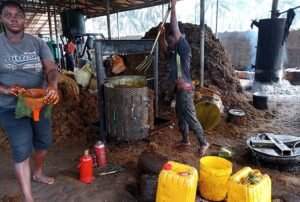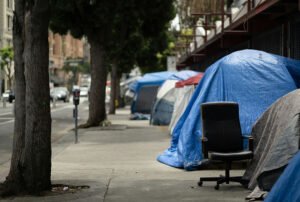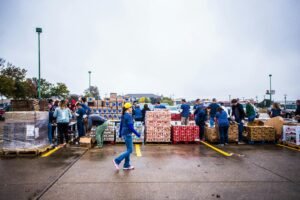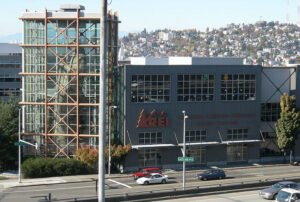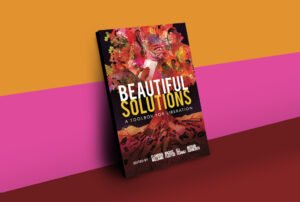
State of the Movements is a recurring NPQ column dedicated to tracking the pulse of social movements and the solidarity economy in 2025.
The solidarity economy movement finds itself at a critical juncture. The opportunity for a breakthrough amid crisis is real, even as social change movements today face increasing repression, fragmentation, and resource scarcity. Our challenge is survival while growing permanently organized communities to resist structural oppression and build the systems necessary for a just future.
Addressing these challenges will be a central theme of an upcoming gathering likely to attract hundreds of solidarity economy practitioners from across the country. Taking place in Atlanta at the beginning of May with the theme “Solidarity at Scale: Converging our Movements for System Change,” this Resist & Build Convening aims to both refine the movement’s vision and plan concrete actions in the coming years.
What Does “Solidarity Economy” Mean to Us?
As detailed before in NPQ, the solidarity economy is a global movement to build a world that centers people and the planet rather than private profit and blind growth. It’s not a blueprint that has been theorized by academics in ivory towers. Rather, it is grounded in concrete, real-world community practices that exist around us—some are old, while others are emergent innovations.
The following definition draws on both the work of the US Solidarity Economy Network (USSEN) as well as RIPESS (Red Intercontinental de Promoción para la Economía Social y Solidaria, or the international network for the promotion of the social and solidarity economy), which led a two-year international consultation process to build a shared understanding of the solidarity economy.
While there is tremendous latitude within the solidarity economy to encompass a wide range of approaches—grounded in the local realities of culture, language, history, political-social-economic contexts, and the environment—here are some core elements of the definition that apply across these specificities:
- The solidarity economy is a framework.
- This framework connects solidarity economy practices (see below for examples).
- Solidarity economy practices are aligned with solidarity economy values, which are:
All of these elements articulate a post-capitalist vision, which holds that we cannot achieve the just, sustainable, democratic, and cooperative world that we seek by reforming capitalism. We do not reject reforms, but we do insist on the importance of seeing them as part of a longer-term process of fundamental system change. In the absence of a deeper post-capitalist strategy, reforms end up strengthening capitalism.
We are now in a period where people’s faith in the status quo is shaken. There’s a growing openness to new narratives, new models, and new paradigms.
Understanding Our Moment: Crisis and Opportunity
We recognize that we live in a historic moment. Rarely has there been a convergence of so many crises. A growing number of scientists believe that humans are fueling our headlong rush toward what is being called the sixth extinction—the fifth extinction wiped out the dinosaurs.
We face the challenges of emerging from one pandemic even as the probability of more is rising, a mounting climate crisis, historic levels of inequality in wealth and income, increasingly virulent racism and nativism, and an alarming slide toward fascism.
Without sufficient financial resources, infrastructure, and cross-movement alignment, cooperative economic models will struggle to scale.
Sign up for our free newsletters
Subscribe to NPQ's newsletters to have our top stories delivered directly to your inbox.
By signing up, you agree to our privacy policy and terms of use, and to receive messages from NPQ and our partners.
These are scary times, but crises also create opportunity. We are now in a period where people’s faith in the status quo is shaken. There’s a growing openness to new narratives, new models, and new paradigms. In this context, the solidarity economy offers a transformative pathway to a new system beyond capitalism.
Key Challenges
The post-2024 landscape, of course, presents many obstacles. These include the rollback of labor protections; environmental regulations; and diversity, equity, and inclusion (DEI) policies. We also face deepened economic precarity. Furthermore, the increased criminalization of activists and growing state repression put direct pressure on movements working to build economic alternatives.
Additional threats loom. For example, many corporations are taking off the gloves. Businesses that previously sought to co-opt the language of economic democracy while maintaining extractive business models have discarded even the appearance of belief in a more open society. Additionally, social media platforms are tightening their control over content algorithms and surveillance increases, movements that once relied on these tools must reimagine digital organizing strategies.
The solidarity economy movement must navigate shocks (sudden crises), slides (structural declines), and shifts (strategic interventions) to remain resilient.
The biggest challenge for movement groups is not the threat and reality of repression but the need to build greater capacity and coordination. While the solidarity economy movement has expanded, it remains underfunded and fragmented. Without sufficient financial resources, infrastructure, and cross-movement alignment, cooperative economic models will struggle to scale and become the widely viable economic pathways that they need to be.
Strategic Questions
The solidarity economy movement must navigate shocks (sudden crises), slides (structural declines), and shifts (strategic interventions) to remain resilient. The COVID-19 pandemic was one such shock followed by a shift, revealing both the failures of capitalism and the power of mutual aid.
However, the challenge remains: How do we transition from crisis response to long-term systems building under a more restrictive organizing environment? Here are a few key ideas we are grappling with:
- Building Movement Infrastructure for Future Crises: This means building the institutions critical for community-based economies—institutions like worker cooperatives, community land trusts, and public banking.
- Bridging Movement Silos: This means engaging in explicit alliances and coalition building with other movement groups with overlapping goals—especially movements for labor rights, abolition, climate justice, and Indigenous sovereignty.
- Balancing Defensive and Offensive Strategies: The need to balance offense and defense is not, of course, unique to solidarity economy movement activists, but it is present in our movement. Internally, we often describe this movement tension as balancing “holding the line” with “building the future.”
A Path Forward
Although the solidarity economy framework is explicitly post-capitalist, we do not claim to have all the answers, nor that there is “one right way” to get to a post-capitalist world. Having said that, the upcoming gathering in Atlanta has several concrete goals. Among these are the following:
- Strengthen relationships. Build trust and deepen connections to amplify our collective impact and sustain our movements.
- Sharpen analysis around systemic change. Engage in rigorous dialogue to deepen our understanding of post-capitalist, solidarity economy futures and non-reformist strategies.
- Connect efforts. Bridge resistance and creation by connecting movements that challenge oppression with those building solidarity economy alternatives.
- Shared learning. Exchange insights, celebrate victories, and weave together diverse movement experiences.
- Collaborate for systemic change. Practice collaboration through real projects, honing our collective ability to create transformative solutions and systemic change.
- Cultivate transformative culture: Foster a joyful, principled community that embodies solidarity economy values and empowers the implementation of liberatory practices. Part of this work includes a “Carnival Beyond Capitalism,” part of the gathering in Atlanta to create a space that embodies the transformative culture we aim to build.
We aim for a space to deepen conversations, align strategies, and collectively define the next phase of our movement. And we invite organizers, cooperatives, and community members to engage—to share, strategize, and commit to the long-term work of building beyond capitalism.



